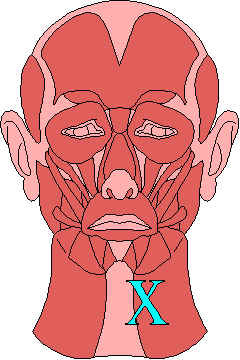Measuring Your Heart Rate Put your index and second finger on the carotid artery. It is at the front and side of the neck next to the throat. Take your pulse for 6 seconds- then add a zero to get the beats per minute. This method isn't perfectly accurate, but it will be close enough to give you a good indication of what your heart rate is. During exercise this will be easy because your heart will really be thumping. To establish your resting heart rate count for 15 seconds, then
multiply by 4. This will give a more accurate reading. Use the following formula.
We start with the number 220 and then subtract our age. Example for a person who is 40 |
* the intensity is the tricky part. If you are over 45, or overweight 10 pounds, or have a sedentary lifestyle- use 60% (.60). If you are all of the above, use 50%. Most people can use the 60% threshold safely. If you are in good health and are semi-active, or a weekend warrior (you know who you are) then use 70%. Most folks are in this category. For example, a 55 year old who works out 3 or 4 times a week would probably be in this category. If you are interested in competitive racing, use 80-85%. |
|||
Base Number Subtract your age maximum heart rate subtract resting heart heart rate reserve
Then add to this your resting heart rate
|
220 - 40 180 -60 120 X .70 84 + 70
154 |
|||
